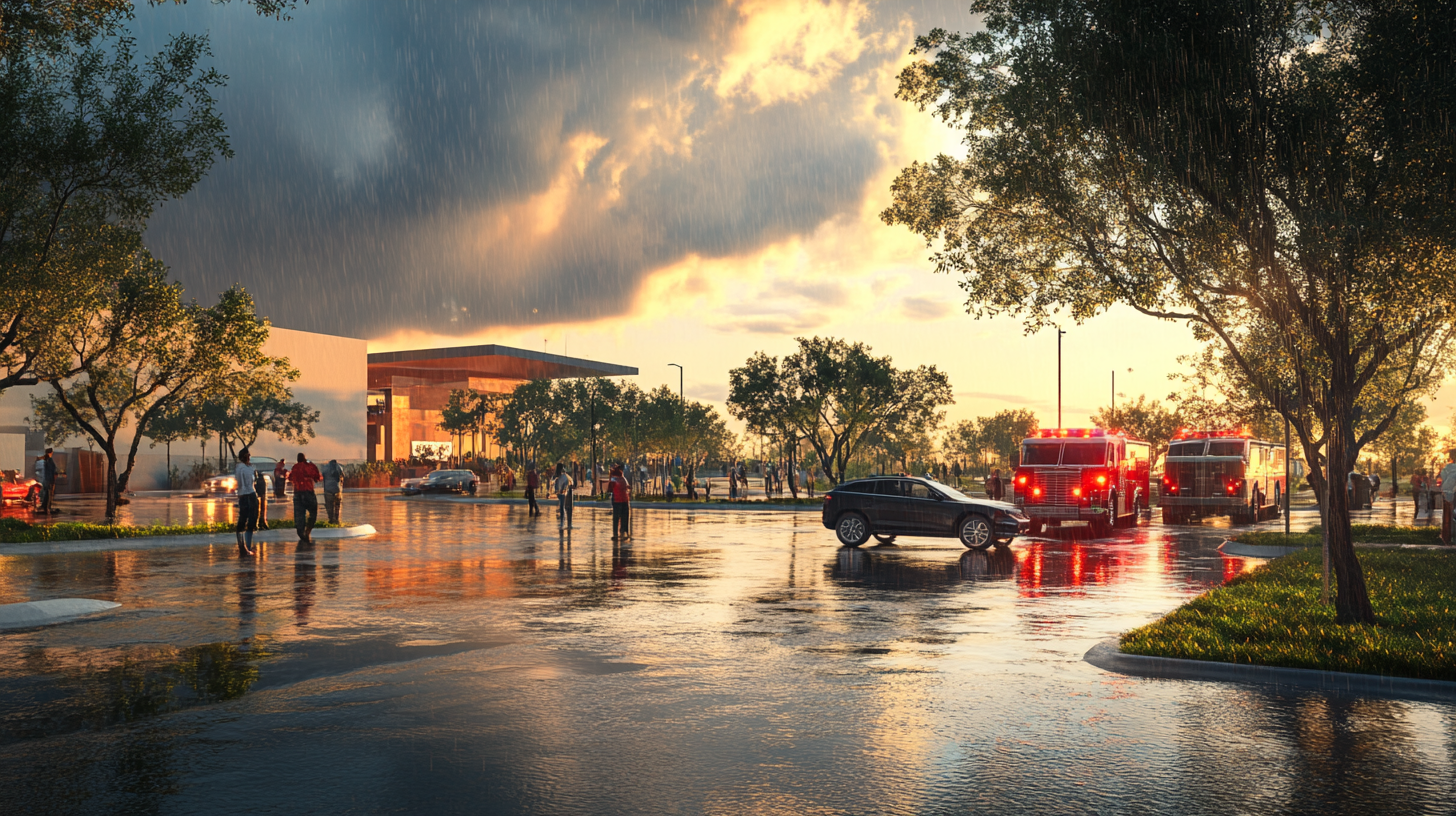Severe Storms Ravage South Texas and Northern Mexico, Trigger Emergency Rescues
Sat, March 28, 2025 – The Texas-Mexico border region is reeling from historic storms that have claimed at least four lives and prompted extensive ongoing rescue efforts, highlighting the fragility of infrastructure and emergency preparedness in the Rio Grande Valley (RGV) and surrounding areas.
Catastrophic Rainfall and Life-Threatening Conditions
The recent severe weather events have pushed the region’s emergency services to their limits. McAllen, Texas, and its surrounding municipalities are conducting intense rescue operations. Residents have been found trapped in inundated vehicles and homes, particularly impacting Hidalgo County, where rain gauges have reported over 21 inches of rainfall in certain areas like Harlingen.
“The intensity of this storm was unexpected. We’ve never seen this much sustained precipitation in such a short period,” said Hidalgo County Emergency Manager Rey Lopez. The deluge has led to a tragic loss of life, and the extent of damage to property and agriculture remains to be calculated.
Local Agriculture and Infrastructure Devastated
Agricultural sectors, which are a cornerstone of the RGV’s economy, have suffered severe losses. The relentless rain has flooded fields, drowning crops and livestock, devastating the livelihood of many local farmers.
Texas Agriculture Commissioner Javier Ortega remarked, “This storm has set our local farmers back significantly. The damage to crops such as grapefruit and sorghum will have long-lasting effects unless mitigated with immediate support.”
Infrastructure across the Valley has also been severely affected. Power outages have plunged thousands into darkness, while upwards of 20 local school districts have been forced to close. Valley International Airport saw its flight operations come to a halt amid the flood.
Mexico’s Northern States Endure similar Fortunes
Across the border, devastation is mirrored, with Mexican cities Reynosa, Rio Bravo, and Matamoros grappling with the aftermath. Responding to these conditions, approximately 640 military personnel have been deployed to bolster rescue efforts. Hundreds of residents have turned to temporary shelters for refuge as communities band together in the face of adversity.
“The flooding in Reynosa is some of the worst I’ve seen in my 30 years living here,” shared Carlos Ramirez, a local resident currently taking refuge in a community center. “We’re all just trying to help each other and stay safe.”
Tragedy at a Water Rescue Site
The storms have also compounded an ongoing crisis on the Texas-Mexico border. U.S. Customs and Border Protection documented a fatal accident involving a suspected migrant smuggling vehicle. Attempting to traverse a flood-swollen roadway in Hidalgo County, the vehicle plunged into a canal resulting in multiple casualties. This highlights the dire circumstances confronting migrants and border officials alike amid natural and humanitarian crises.
Meanwhile, Alamo Fire Department Chief R.C. Flores described ongoing operations in his region, having responded to over 100 rescue calls. “We are working tirelessly to get everyone to safety, but this is an unprecedented scenario for our community. Resources are stretched to their breaking point,” he explained.
Community Resilience Amid Disastrous Conditions
Despite the hardships, the resilience of Valley residents shines through. People like Jionni Ochoa from Palm Valley have found community spirit despite personal losses. “The bed is the only thing dry right now. Everything else is underwater, from the sofas to electrical outlets. Still, I’m grateful for my neighbors and the incredible help that’s on its way.”
As the situation gradually stabilizes, local officials continue to evaluate damages and coordinate restoration of services. Governor Greg Abbott is expected to visit the region to discuss state and federal assistance packages aimed specifically at such record-setting climate events.
Ongoing Advocacy for Infrastructure and Emergency Preparedness
This storm pushes the need for a broader discussion on infrastructure resilience in the face of increasing climate volatility. Historical parallels can be drawn from past emergencies in the RGV, highlighting a pressing need to bolster emergency preparedness and implement sustainable water management systems.
Local advocacy groups emphasize investing in disaster-resistant infrastructure and robust early-warning systems for a region inherently prone to extreme weather given its low-lying geography. Dr. Elena Gonzalez, a geographer at the University of Texas Rio Grande Valley, points out, “Events like this will happen again. Only with strategic planning and investment can we minimize future impacts and protect our communities effectively.”
Looking Forward: Community Support and Resources
Valley residents seeking information on recovery resources should contact their local government offices or visit designated community support centers. The Hidalgo County emergency services hotline remains actively staffed to field queries and coordinate ongoing assistance.
As South Texas and its residents begin the journey to recover and rebuild, the focus remains on community unity and shared resilience. This disaster, daunting as it is, serves as a reminder of the strength in collaboration and the importance of continued advocacy for the vulnerable and underserved across the Valley.







